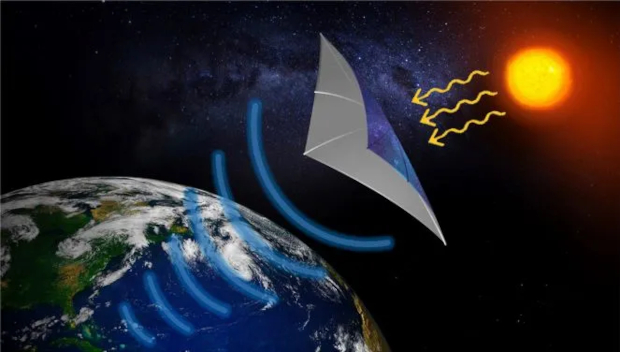
Japan wants to generate solar energy in space and send it back to Earth
Japan wants to launch a power station with solar panels into space, after which it should bring the generated solar energy back to Earth. The project named Ohisama – Japanese for ‘sun’ is expected to take off in 2025.
Advisor Koichi Ijichi of the Japan Space Systems research institute shared more details at a conference last week in London. OHISAMA is a satellite that is soon to transmit the solar energy generated to Earth wirelessly, where it will hover in relatively close orbit.
“It will be a small satellite of about 180 kilograms. It will transmit about 1 kilowatt of energy from an altitude of 400 kilometers,” Ijichi informed.
This is clearly a first, tentative step. 1 kilowatt is not that much. You can run a small household appliance like a dishwasher for an hour with it, according to Space.com.
The battery aboard the satellite is charged by means of a 2 square-metre photovoltaic cell. Then the collected energy is converted into microwaves and sent to a receiving antenna on Earth.
The spacecraft will move at a speed of 28,000 kilometers per hour. For good reception with sufficient energy, several antenna parts will soon have to be scattered over a distance of about 40km, with 5km between each part.
“That transmission only takes a few minutes,” Ijichi assured. “But once the battery runs out, it takes several days to fully recharge it again.”
Japanese engineers have already succeeded in transmitting an energy signal wirelessly from the ground. In December, a plane should succeed in doing the same, but in full flight and at a distance of 5km to 7km.
Scientists have been trying since the 1970 s to build a system where solar energy can be generated in space and then brought back to Earth. SpaceX’s Starship should in theory also be deployable for such purposes. European space agency ESA is also conducting tests.
However, the project is receiving criticism from NASA. In a January report, the agency wrote that the final energy produced by such satellites wouid be far too expensive. At 61 US cents per kilowatt-hour of energy, the technology does not outweigh solar or wind energy produced on Earth, which costs about 5 cents per kilowatt-hour.
Moreover, the carbon footprint you create from the launches would also be higher than other green technology on Earth.
News Wires








Subscribers 0
Fans 0
Followers 0
Followers